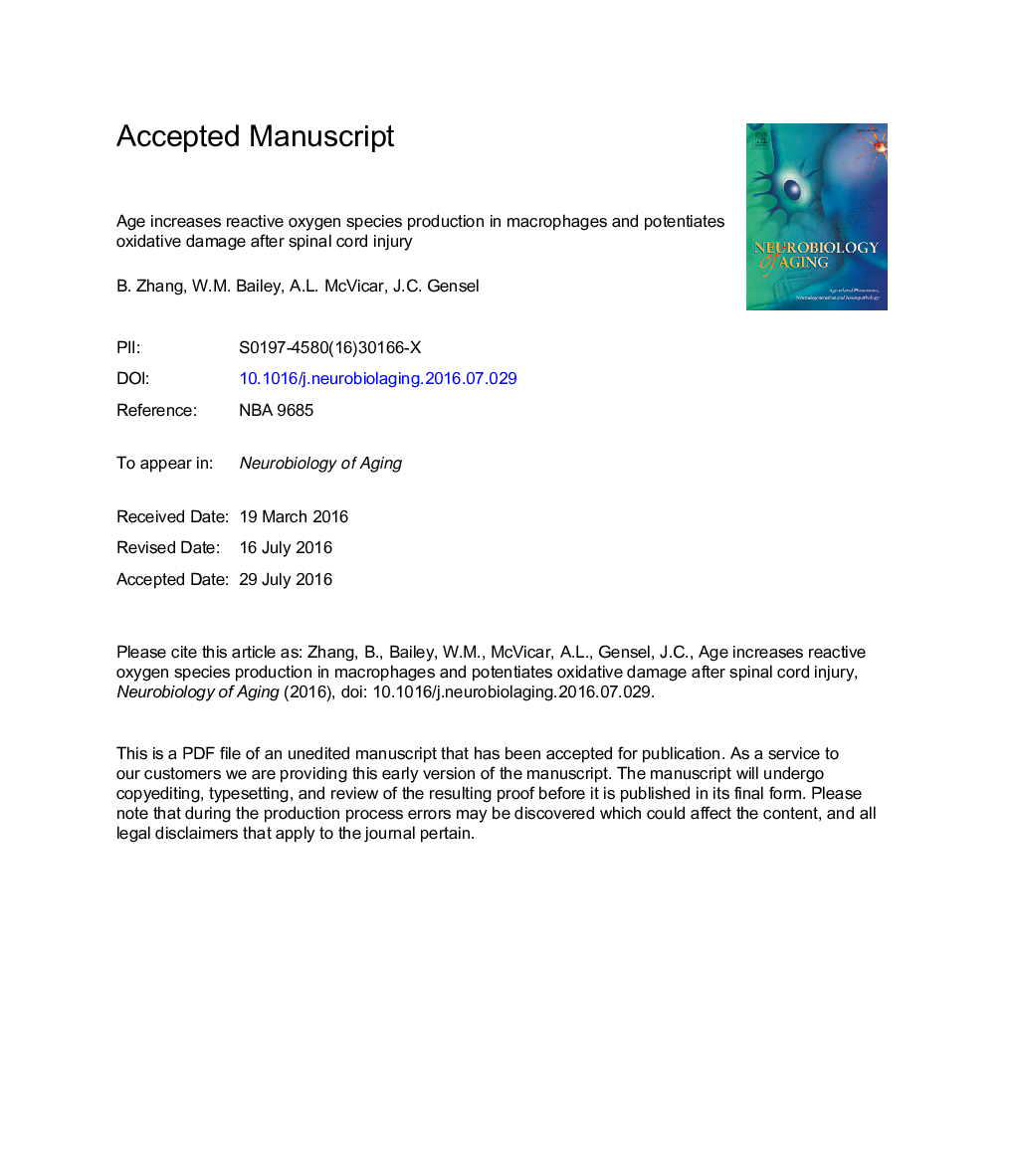| کد مقاله | کد نشریه | سال انتشار | مقاله انگلیسی | نسخه تمام متن |
|---|---|---|---|---|
| 6803265 | 1433537 | 2016 | 28 صفحه PDF | دانلود رایگان |
عنوان انگلیسی مقاله ISI
Age increases reactive oxygen species production in macrophages and potentiates oxidative damage after spinal cord injury
ترجمه فارسی عنوان
سن رشد تولید اکسیژن واکنشی را در ماکروفاژها افزایش می دهد و آسیب اکسیداتیو پس از آسیب نخاعی را تقویت می کند
دانلود مقاله + سفارش ترجمه
دانلود مقاله ISI انگلیسی
رایگان برای ایرانیان
کلمات کلیدی
موضوعات مرتبط
علوم زیستی و بیوفناوری
بیوشیمی، ژنتیک و زیست شناسی مولکولی
سالمندی
چکیده انگلیسی
Age potentiates neurodegeneration and impairs recovery from spinal cord injury (SCI). Previously, we observed that age alters the balance of destructive (M1) and protective (M2) macrophages; however, the age-related pathophysiology in SCI is poorly understood. Nicotinamide adenine dinucleotide phosphate oxidase (NOX) contributes to reactive oxygen species (ROS)-mediated damage and macrophage activation in neurotrauma. Further, NOX and ROS increase with central nervous system age. Here, we found significantly higher ROS generation in 14 versus 4-month-old (MO) mice after contusion SCI. Notably, NOX2 increased in 14 MO ROS-producing macrophages suggesting that macrophages and NOX contribute to SCI oxidative stress. Indicators of lipid peroxidation, a downstream cytotoxic effect of ROS accumulation, were significantly higher in 14 versus 4 MO SCI mice. We also detected a higher percentage of ROS-producing M2 (Arginase-1-positive) macrophages in 14 versus 4 MO mice, a previously unreported SCI phenotype, and increased M1 (CD16/32-positive) macrophages with age. Thus, NOX and ROS are age-related mediators of SCI pathophysiology and normally protective M2 macrophages may potentiate secondary injury through ROS generation in the aged injured spinal cord.
ناشر
Database: Elsevier - ScienceDirect (ساینس دایرکت)
Journal: Neurobiology of Aging - Volume 47, November 2016, Pages 157-167
Journal: Neurobiology of Aging - Volume 47, November 2016, Pages 157-167
نویسندگان
Bei Zhang, William M. Bailey, Anna Leigh McVicar, John C. Gensel,
